Text and photos: Usha Hariprasad
For a while, walking the cobbled streets of Pondicherry near the seafront, you can get confused. Rue Victor Simonel, Rue de Caserne, Rue Romain Rolland; everywhere you turn, you see a Rue de something, and you get the feeling that you are somewhere in southern France. The clean streets, the big villa styled homes, the elaborate gateways and balconies, only emphasise this feeling. The French influence is strong here and the reason is plain enough to see. After all, the French had made this town their home, for more than a 100 years. In fact, Pondicherry is the French interpretation of the word ‘Putucceri’, which means new settlement in Tamil.
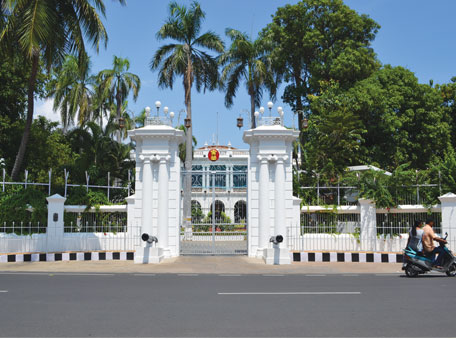
The history of Pondicherry
The Union Territory of Pondicherry comprises the Pondicherry town and its villages, Karaikal in the south of Pondicherry, Mahe on the west coast and Yanam in Andhra Pradesh; all former French colonies. There are over 7,000 industries in Pondicherry, with only 35 percent of the population depending on agriculture.

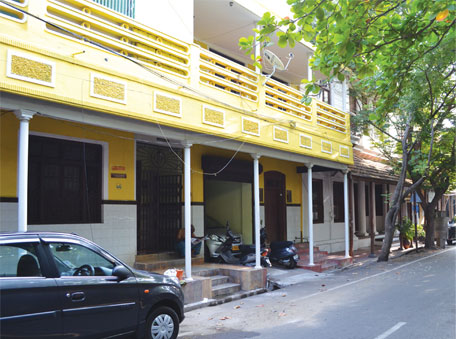
Pondicherry came under a lot of rulers between 4th-17th centuries. The earliest rulers of Pondicherry were the Pallavas of Kanchipuram. They ruled Pondicherry until the start of the 10th century. Then it came under the powerful Cholas until the 13th century. Rajendra III was the last Chola king to rule Pondicherry. After that the state came under the rule of the Pandya kingdom. Later, Ulugh Khan defeated the Pandyas and established his rule in Madurai. The Sultanate of Madurai came to an end with the Vijayanagara rule. The Vijayanagara rule lasted till 1614 after which the Sultanate of Bijapur established their rule until 1638.
Pondicherry’s colonial history
The colonial history of the city begins at the turn of the 16th century. The Portuguese set foot in 1520 with the trade in textiles. They set up a factory in 1523. The Dutch started buying textiles around 1618 and the Danes followed, setting up a factory in 1624. The French arrived in 1674 and established their new settlement. They were the last of the European powers to come to India for trade. The Dutch captured Pondicherry in 1693 but returned it to France through the Treaty of Ryswick. The Dutch power then on reduced while the British influence grew.
The period 1740 to 1757 witnessed a lot of power struggle between the British and the French for supremacy. During the French administration the town was fortified, the streets and the city were well-planned. There were wide outer ring roads for the movement of traffic, the inner streets laid out in grids were meant for walking. The town became an important port- the warehouses that stored stocks like groundnuts, cashew, cheese, silk etc., still stand today.
In 1742, with Dupleix appointed as Governor of Pondicherry, France, whose interest until then was commercial, slowly became involved in Indian politics. During his administration, Dupleix strengthened the defences in the town. In 1761, the British captured Pondicherry and removed the fortifications. In 1763, with the Treaty of Paris, Pondicherry was returned to France. Finally, after 138 years of French occupation, the territory was handed over to Indian administration in 1954.
Today we can see both the French and Tamil quarters in the town. A storm water canal separates the two quarters.
Pondicherry and the Aurobindo connection
Sri Aurobindo and Pondicherry have a deep spiritual connection. After all, this is the place he chose when he decided to devote himself to spiritual work. Born in Calcutta, Sri Aurobindo was a professor in Baroda College for 13 years. He was very active in politics and was one of the leaders of the National Movement. He began his practice of yoga in 1905 and five years later, he gave up politics and came to Pondicherry. In his 40 years of residing in Pondicherry, he developed a new system called Integral Yoga that focusses on spiritual realisation.

In 1926 he founded the Sri Aurobindo Ashram along with Madame Mirra Richard, who is considered to be his spiritual partner. Madame Mirra Richard popularly known as the ‘Mother’ was born in Paris on Feb 21,1879. She was a French painter, sculptor, writer, who was deeply interested in spirituality. She used to see visions of Sri Aurobindo. She met Sri Aurobindo in 1914 and realised that he was the spiritual guru appearing in her visions. She then joined him in 1920 in Pondicherry. The Mother was in charge of the Ashram and she established the Sri Aurobindo International Centre of Education in 1952, and Auroville in 1968.
Things to do in Pondicherry
With so many attractions vying for your attention, Pondicherry can be confusing. So here is a compilation of must -do-things while in the city:
Sri Aurobindo Ashram
“Develop your inner being, find your soul”, “Organise your life, your work, your consciousness”. Sayings such as these guide you inside the serene Aurobindo Ashram in Pondicherry. Founded by Sri Aurobindo and the Mother, the ashram can open your doors to an entirely new world, where every aspect of work is seen as a tool for spiritual discipline. There are over 80 departments ranging from health, education, gardening etc., and the residents of the ashram work as volunteers here. For the visitors there is an art gallery, library and photo section giving more details about Aurobindo and the Mother. At the centre of the Ashram lies the samadhi of Aurobindo and Mother, very beautifully maintained, and is a calming place to sit in silence for a few minutes. The flowers and the incense lit there make the atmosphere very conducive for meditation.
Manakula Vinayagar Temple
There are more than 350 temples in Pondicherry and some were built by Chola kings between the 10th and 12th centuries. Situated a few minutes from Aurobindo Ashram, there is a lovely temple of Lord Ganesha called the Manakula Vinayagar temple. The temple is an ancient one and is said to have existed before the French arrived in the city. It is also called as Vellakkaran Pillai (White man’s Ganesha). It is believed that a French man tried to do away with the deity but it miraculously kept reappearing. This turned him into a devotee of Ganesha.
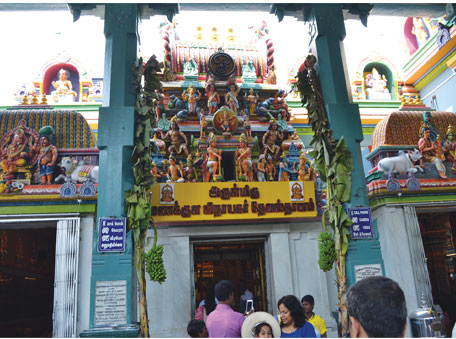
There are two versions of how the temple got the name ‘Manakula’. ‘Manam’ indicates mind and ‘kulam’ means pond in Tamil. The belief is that praying to the deity here can calm the mind like a pond. The second version seems more realistic, though. The word ‘Manal’ indicates sand. Old Pondicherry was full of ponds and sand dunes. A Ganesha deity was installed on the bank of the pond and people used to worship the idol after their bath in the pond. A temple was soon constructed and as it was near the banks of the sandy pond, it got the name Manakula Vinayagar temple.
The Promenade
This 1.5 km long stretch on the beach is a treat for the eyes. The cool breeze, the misty waves crashing the black rocks lining up the stretch, the beautiful sunset, the multitude of shops offering you anything from gelatines to pastas, is an experience by 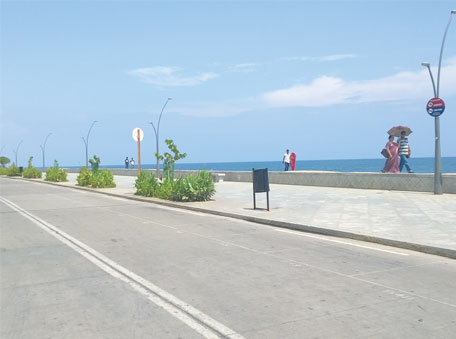
Churches
The 17th and 18th century churches are a must-visit. The gothic splendour of Eglise de Sacre Coeur de Jesus, its rare stained 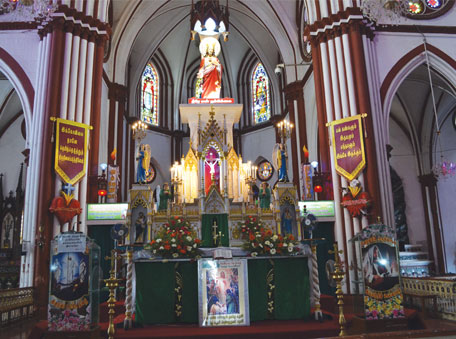
Auroville
Auroville was founded on 28th February 1968 by the Mother. Designed by Roger Anger, it is an international township, belonging to humanity as a whole. It was developed on the lines outlined by the Charter given by the Mother. People from different nations reside here in peace and harmony, focusing on their higher, spiritual self. Currently there are around 2400 people from different nations residing here, though the township was intended for around 50,000 people. The city is planned in such a way that it has a peace area, various city zones like industrial zone, cultural zone, residential zone etc., and finally, surrounded by a green belt of 405 hectares. There are several organisations working here like the Auroville Trust that manages the affairs of residents, the Artisans Trust that looks after the productive units like handicrafts, the Centre for Scientific Research that studies alternative sources of energy etc. At the centre of the city in the peace zone lies Matrimandir, a place meant for inner focus, concentration and silence.
Matrimandir means ‘Temple of the Mother’. The Mother here refers to the universal force, that conscious intelligence governing life. The Matrimandir is a large golden sphere with 1400 golden discs. The architect was Roger Anger and he began building it on 21st February 1971. At the apex of the sphere is an opening to let sunlight enter in. The light falls on a crystal glass globe at the centre of the sphere that guides light all through the meditation hall or the inner chamber, which is fully white.
Surrounding the sphere are 12 gardens, each with different names like Existence, Consciousness, Bliss, Light etc. The Mother selected a central flower for each garden. Barring the garden of Wealth and Garden of Perfection, the rest of the gardens have hibiscus as their flower, albeit in different colours.
(Tip: Passes to enter the dome can be collected at the visitors’ centre i.e. at the entrance of Auroville. But be warned; there is a waiting time of two days. Matrimandir is around 1 km walk from the visitor’s centre. One can also stay at Auroville and be a part of the volunteering community.)
Pondicherry Museum
Excavations from Arkiamedu period, 1st century burial urn, stone tools of Neolithic age, pieces from Tsung period in China, precious stones, palm leaf manuscripts, bronze sculptures from Chola, Pallava and Vijayanagara period, terracotta figurines, French Transport – all these and more at the Pondicherry museum will open your eyes to the strategic importance of this place in history. The museum is vast with different sections – Archaeological, Transport, Numismatic, Arms, Geological, French, Bronze section etc., each a treasure trove of information. In the Bronze Gallery there are temple lamps from different dynasties, in the Transport section you will see coach, palanquin and pousse-pousse (cycle rickshaw) of the French period.
Other museums you can visit are the Jawaharlal Toy Museum and the Bharati Memorial museum.
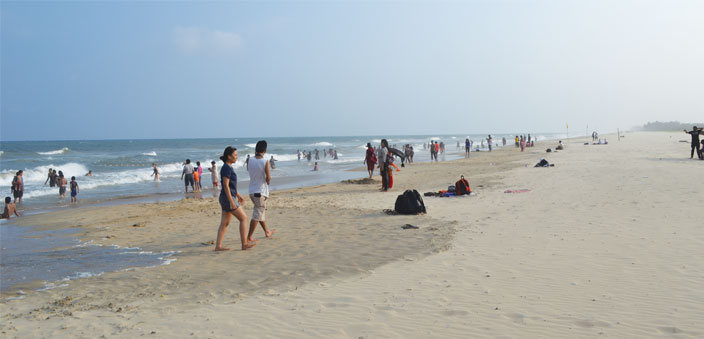
Chunambar Water and Sports Centre – Paradise Beach
Paradise Beach lives up to its name. Pristine sandy beaches, blue skies, lush greenery is what you expect and what you get, when you visit this beach. The beach is accessible through beautiful backwaters at Chunambar Water and Sports Centre located along the Cuddalore Main Road. This centre is about 8 km from Pondicherry. From this place you will have to purchase tickets and cruise along the backwaters to meet the blue sea. Normal boats, speed boats and other ferry services will take you to Paradise beach in 15-20 minutes. The beach is not very crowded and is a well maintained one. There are changing rooms and a couple of shacks offering basic food stuff and water. As the sea is not very rough here, it is safe for both kids and adults. The ferry service is from 9-5 pm and boats are available every 30 minutes to ferry you to and fro. The last boat leaves by 6:30 pm.
(Tip: If you would like to see some fishing activity, then you could head out to Serenity Beach close to Auroville. This beach is not well maintained though.)
For water related adventure activities like kayaking, surfing and pool diving, there are a number of diving centres and surf schools ready to show you a different world beneath the sea.
Aayi Mandapam and Bharati Park
This park is near the beach and is a good place to rest or walk. The garden is beautiful and is surrounded by important government buildings like the Governor’s Palace, Legislative Assembly etc. This park also has historical importance. It was originally the site of the first French Garrison, Fort Louis that got destroyed by the British in 1761. There is also the Aayi Mandapam or the park monument at the centre of the park. It is a Greco-Roman styled monument built during the reign of Napoleon III, Emperor of France. Aayi was the name of a 16th century courtesan who once had her home here. She demolished her home to appease a king who mistook her candle lit home in the night as a holy place and went to pay his respects. When he discovered the truth, he was angry and to please the king she built a reservoir in place of her home. Some 300 years later, it was this very same reservoir that quenched the thirst of Napoleon’s men. Napoleon III, charmed by this story, ordered a monument to be built for Aayi.
Botanical Garden
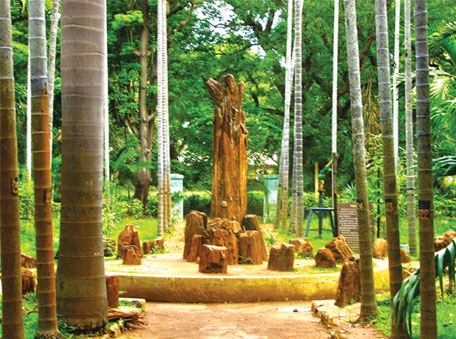
(Tip: Check out the fossil section that has a 20 million-year-old fossil tree.)
From delicious thin crepes to mouth-watering South Indian traditional fare and Italian pasta, Pondicherry is a gourmet’s delight. Though the French and Tamil streetscapes boast a lot of these hangouts, there are some go-to places in the city.
Surguru is where you head to if you wish to taste traditional south Indian tiffin. The variety of idli, dosas, appams and iddi appams will give you a great start to the day. Villa Shanti, Le Café, Les Chefs, Indian Coffee House, Le Chateau are some other options that you could try out. For some ethnic Italian stuff visit La Pasta World. They serve some decent pasta, all freshly cooked with fresh ingredients and homemade sauce. And if you are in the mind for some excellent wood fired pizza then check out Café Xtasi for some tasty pizzas with varied options. Other cool places to check out are Café des Arts for Crepes, Café Ole for sandwiches, Auroville Bakery and Bakers Street for French Breads, Le Dupleix for Indian and European cuisines and Zuka for delicious chocolates.
While there, don’t forget to try out filter coffees and masala milk. Filter coffee is available at various joints while masala milk outlets are near the sea shore. Made from nuts, sugar and various spices, this hot drink is especially welcome after a day of sightseeing. Numerous eating places s near the Promenade is something that should be tried out as well. From seafood dishes, pastas and ice-creams, there are some heavenly dishes one just shouldn’t miss.
Heritage walks
For those who would like to delve deeper into the history of Pondicherry, a heritage walk in the city is a must. INTACH (Indian National Trust for Art and Cultural Heritage) conducts regular heritage walks in the Tamil and French quarters of the city. The organisation has partnered with the state government to restore heritage structures in the city. It also offers guidelines to private owners who would like to repair and renovate their homes. INTACH has recently renovated the Indian Coffee House, Le Café etc., in the city.

Pondicherry has not yet got the heritage tag that can protect its 17th century old buildings and heritage structures in the city. That is why there has been destruction of most of the structures in Tamil quarters and part of the French quarters. A walk with INTACH in these areas will help you understand the history of these buildings, the effort taken to renovate these structures. In the past decade, there has been a lot of pressure to bring down the old structures in the city to give way to new buildings.
The walk in the French streetscapes will also make you realise a few details about renovation. With each restoration in the French quarters, the main French elements are retained while modern elements are added to it; say, the outer walls, big pillars, high ceilings and inner courtyard would be maintained while adding extra features over it, as the owner demands.
Accommodation in Pondicherry
Local home stays, budget hotels, luxury inns – take your pick. Whether you are a traveller on a budget or a tourist seeking a true heritage experience, Pondicherry has a lot to offer either way. Tamizh Park, Villa Beyond, Promenade, Coramadal, Surguru, Kings’s Residency etc., are some preferred budget accommodations in Pondicherry. If you are looking for a tinge of romance with a French twist, then heritage hotels is the answer. To name a few, Du Parc hotel, Villa Pondicherry, Hotel De L’Orient, Villa Helena, Villa Shanti, Maison Perumal etc.
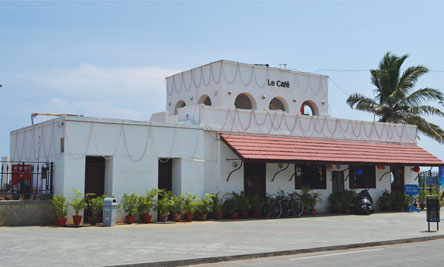
Guilt-free shopping
Every nook and corner you hit on a quaint little shop housing some treasure. It could be colourful hand-printed fabrics, handmade cards, incense, perfumes, scented candles etc., the urge to buy and linger in the shop gets pronounced. And nobody can blame you. After all, Pondicherry is famous for things like traditional handlooms, handmade products like paper, carpets, hand printed textiles, dolls and leather goods. Till the 1980’s, the town boasted of handicrafts like hand printing, cane and bamboo works, perfumes etc., which soon gave way to terracotta, stone and wood carving, clay toys, incense etc. Tourists visiting Auroville also taught skills to local people like dried flower decorations, scented candles, art pottery, ceramics etc.
It could be a guilt-free shopping too as Pondicherry is duty free, which means low taxes on goods like handicrafts, leather goods, textiles, and you can buy goods at subsidised rates. The popular streets for shopping are the Mission Street, Nehru Street and the Sunday Market happening at the Mahatma Gandhi Road. Some of the go-to shops in the city are Boutique Auroshree for handicrafts, Kalki for funky arts and items, and Casablanca for some international brands of décor items, Hidesign for leather goods, Auroshika for items made from Aurobindo Ashram, Fabindia, and Anokhi. To check out local markets you can also head out to Goubert Market, Serenity Beach Bazaar set up mainly on weekends.


 [/column]
[/column]